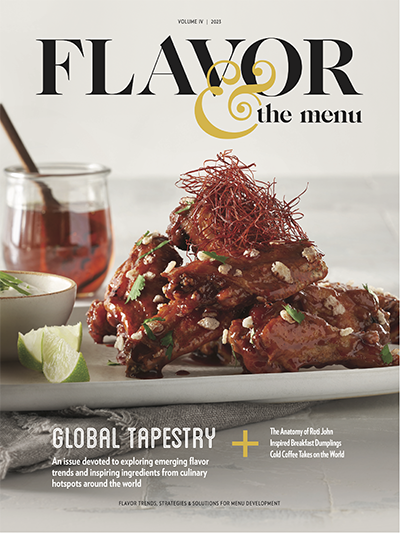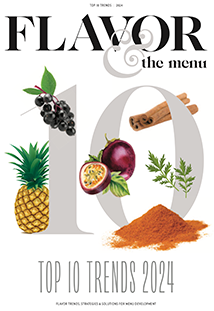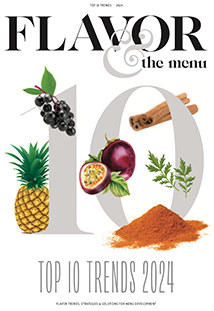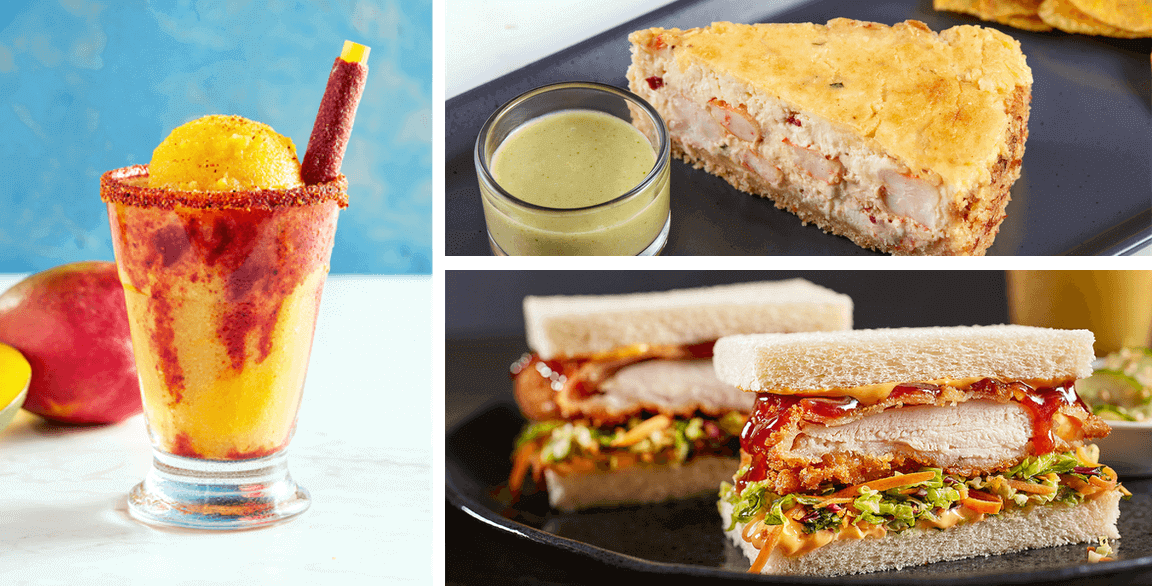


Eric Stein
Chef, International Research & Development
Church’s Texas Chicken
Kitchen Collaborative is a recipe-development initiative formed by Summit F&B and Flavor & The Menu. To fuel flavor innovation, a group of talented chefs partnered with sponsor brands and commodity boards to create recipes that showcase the passion and potential of our industry.
CHEF SPOTLIGHT: Eric Stein
“Flavor and texture are always critical considerations when creating new recipes,” says Eric Stein, Chef, International R&D for Church’s Texas Chicken. “In addition to striving to balance the basic tastes, I also ask myself, ‘How do all of the components of a dish marry if I were to serve them as one bite in a spoon?’” Stein applies this philosophy thoughtfully across all menu categories, from breakfast beverages to craveable sandwiches and scrumptious shareables.
Stein, who finds culinary inspiration in building a dish around a singular ingredient, was well-suited for Kitchen Collaborative assignments, and his resulting contributions reflect a confidence and understanding of how ingredients contrast and compare in combination. In his Honey Teriya-Q Katsu Sando, Stein gives a Japanese favorite a bold Texas-style makeover, while he injects Latin notes into a Cajun classic with his Rock Shrimp Cheesecake with Creamy Salsa Verde. He transforms a Mexican frozen treat into an immunity-boosting breakfast beverage with his Ginger Mangonada.
Honey Teriya-Q Katsu Sando
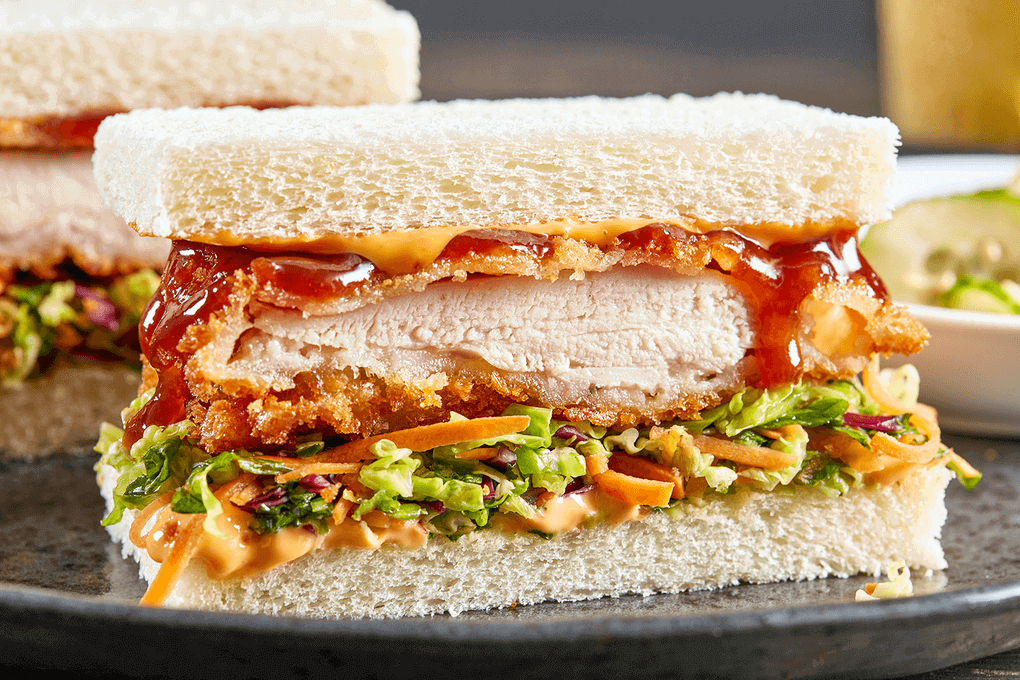 Photography: Carlos Garcia // Food Styling: Peg Blackley & Bree Williams
Photography: Carlos Garcia // Food Styling: Peg Blackley & Bree Williams
“Japanese cuisine is one of my favorites, especially Chicken Katsu Curry,” says Stein. “I’ve been happy to see the concept of katsu exploding in recent years.” Traditionally, the katsu sando is a panko-breaded and deep-fried pork cutlet wrapped in a crustless white bread. “It’s a great platform, and it has been really fun to see how chefs have been exploring their own signature versions, from simple to sophisticated. Katsu sandwich wars, anyone?”
Stein’s offering is the Honey Teriya-Q Katsu Sando, which stars boneless, skinless chicken thighs prepped with an umami seasoning blend, Kikkoman Tempura Batter Mix and Kikkoman Panko Breadcrumbs, and then deep fried. The sando is built on Japanese milk bread—crusts removed—spread with Kikkoman Sriracha Mayo, followed by a mound of ponzu cabbage slaw, the chicken thigh, and topped with a homemade honey “teriya-q” sauce. Both the ponzu slaw and the sauce are made with additional Kikkoman products.
“Blending honey barbecue sauce with teriyaki is definitely one of the unique features of this version,” says Stein. “Dressing the vegetable slaw with sesame oil and ponzu also brings more Japanese flavors into play.” He opted to amp up the traditional shredded cabbage element with more color, flavor and texture through use of a slaw mix of green and red cabbage, carrots, mustard greens and scallions. Another point of differentiation is the tempura batter as a wet dredge for the katsu, which gives more crunch to the cutlet, says Stein.
The result is an impressive union of sweet, salty, sour, bitter and umami in every bite. “The combination of the pillowy milk bread, spicy mayo, zesty slaw, crispy chicken and sweet-and-salty sauce will keep your guests craving more,” he says. “I believe this one-bite approach in planning is what gives the sandwich such craveability. While each component is relatively simple on its own, the combination is literally an explosion of flavors and textures.” In addition to spotlighting Kikkoman products, Stein says he was inspired by the Japanese pork tonkatsu and the challenge of translating it to his menu at Church’s Texas Chicken: “As they say, ‘Everything is bigger in Texas,’ so I created a big, bold, coleslaw-loaded, barbecue-sauced fried chicken sandwich.”
Rock Shrimp Cheesecake with Creamy Salsa Verde
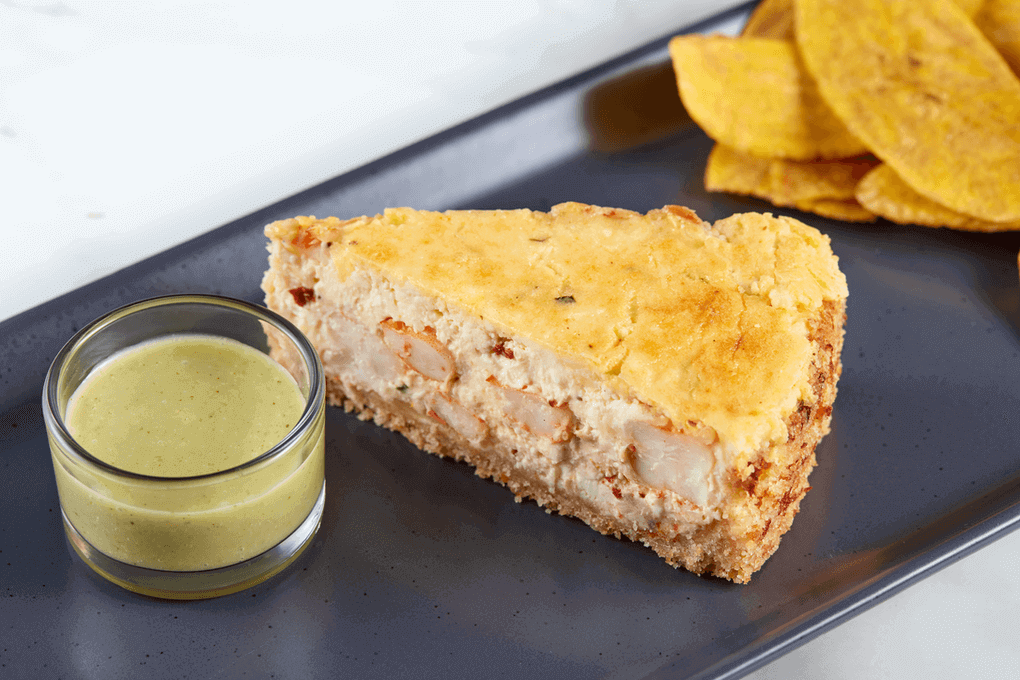 Photography: Carlos Garcia // Food Styling: Peg Blackley & Bree Williams
Photography: Carlos Garcia // Food Styling: Peg Blackley & Bree Williams
Stein’s inspiration for his Rock Shrimp Cheesecake starts with his appreciation for Cajun and Creole cuisines. “I love Cajun and Creole cuisines, and this dish is inspired by a crawfish cheesecake you might find in New Orleans,” he says. His interpretation of this regional specialty features California requesón cheese. This Hispanic variation of ricotta has a slightly tart, salty, semi-sweet taste, explains Stein. “It inspired me to give my cheesecake a bit of a Latin flair by adding a salsa verde and plantain chips.” Ultimately, he describes the dish as a fusion of California cuisine with influences from New Orleans, the Yucatan and the Caribbean.
The requesón has a very fine, grainy texture, similar to ricotta, but boasts a slightly higher protein content, which adds more body to the dish, Stein notes. The rock shrimp tails are given a flavor punch with a shrimp seasoning, and the recipe also features grated Asiago and cream cheeses, sundried tomatoes, garlic and scallions.
“Flavor and texture are the two components I always consider when creating new recipes,” he explains. “There is the crunch from the plantain chips, the creaminess from the cheesecake, the firm and chewy textures from the shrimp and sundried tomatoes and, finally, a little bit of heat from the spicy salsa.” Reaffirming his one-bite philosophy, Stein suggests the cheesecake be spooned onto a chip and topped with salsa. And while his original vision was to serve it as individual wedge portions, he notes that “however you slice it, served as part of a larger cheese display, as an individual appetizer or as a shareable, this cheesecake is a flavorful way to kick off your meal.”
Ginger Mangonada
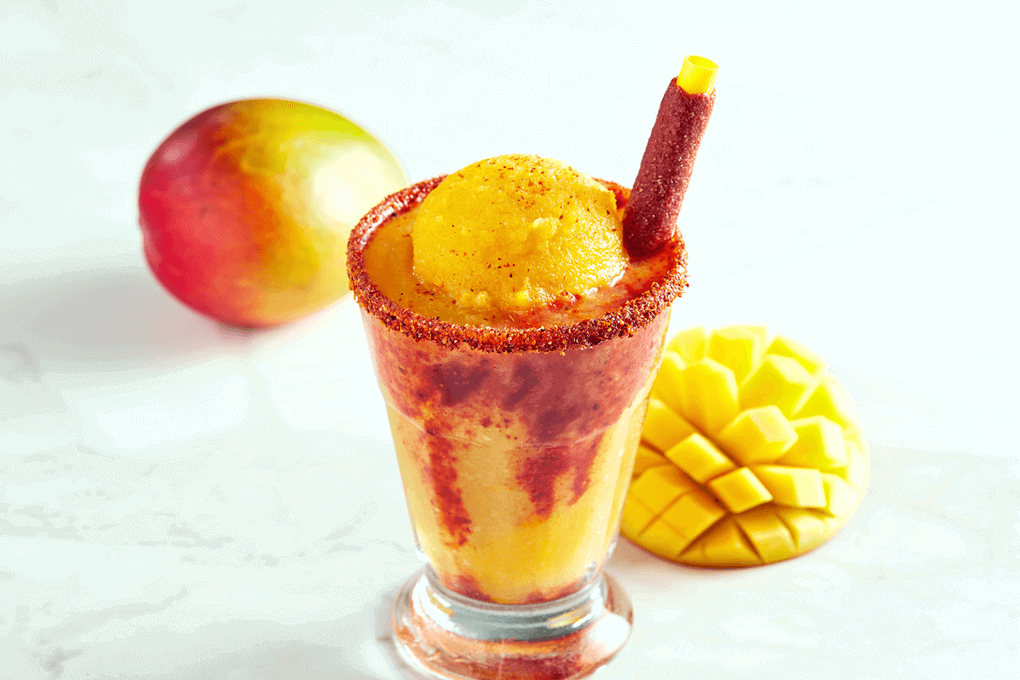 Photography: Carlos Garcia // Food Styling: Peg Blackley & Bree Williams
Photography: Carlos Garcia // Food Styling: Peg Blackley & Bree Williams
The frozen, blended mangonada is a traditional Mexican street beverage, often sold near the beach and featuring the sweetness of mango with the bold flavors of chamoy and Tajin. “It’s meant to be sweet and savory at the same time,” says Stein, lauding its flavorful punch of sour, sweet, spicy, salty and tangy. But it’s the immunity-boosting properties of his Ginger Mangonada that differentiates his version from the traditional beach treat.
“Immunity has become such an important concept—one that will continue for some time,” says Stein. “All of the ingredients in this recipe are great for boosting our body’s immune system. Mangonada doesn’t usually contain honey, turmeric or ginger.” He explains his threefold use of mangoes: “Fresh mangoes are ideal for making a smooth and creamy sorbet and the mango nectar added to both the sorbet and the smoothie emphasize the fruit’s flavor, while adding sweetness. The frozen mango cubes actually replace ice cubes, helping to provide a richer mango flavor. In combination, this mangonada is bursting with mango flavor!”
Stein’s dialed-up mangonada features vitamin C, capsaicin and other antioxidant benefits. “This is a great way to bring a boost of immunity to a delicious and on-trend menu item. Kind of like drinking liquid sunshine,” he says. But is it a bar beverage, a dessert or something else? “While I wouldn’t complain if I saw this recipe served with a float of mezcal, I see it more as something to kickstart the day. Ginger and chiles are a great way to get your blood pumping in the morning!”
Project Management: Summit F&B
Photography: Carlos Garcia // Food Styling: Peg Blackley & Bree Williams

